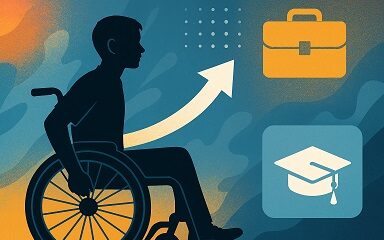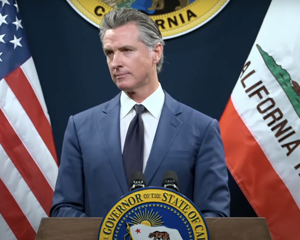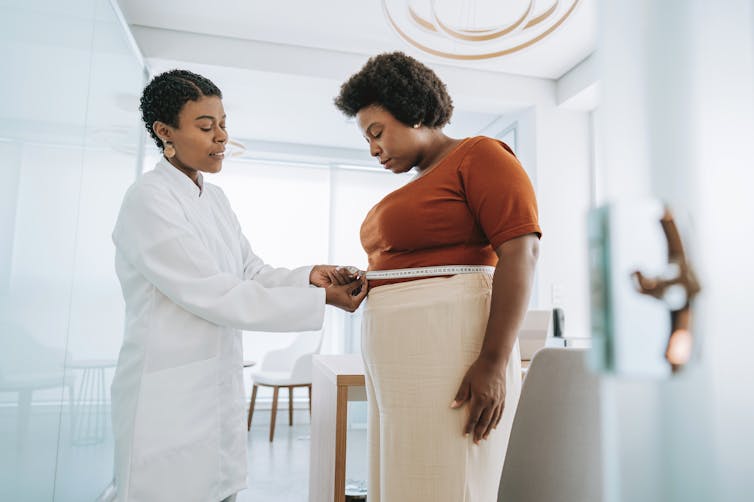
andreswd/E+ via Getty Images
Loneke Blackman Carr, University of Connecticut and Jameta Nicole Barlow, George Washington University
The popularity of weight loss drugs such as Ozempic and Mounjaro continue to reflect Americans’ desire to slim down. While these new drugs have offered a solution for people struggling with obesity, many eligible patients – especially Black adults – cannot afford the high price.
These drugs are also not a one-stop solution for better health, as healthy eating and regular exercise are also key to losing weight. But current weight loss interventions based on lifestyle changes largely fail to meet the needs of Black women.
As community health researchers, we wondered why scientists have been unable to craft a lifestyle-based weight loss solution that works for Black women.
So we reviewed 10 years of research on weight loss interventions based on lifestyle changes. We found that only a few studies focused on Black women, and those that did often resulted in only small amounts of weight loss and were inconsistent in how they approached weight loss. Why is that?
Missing the mark for Black women
Obesity increases the risk of developing weight-related conditions such as Type 2 diabetes, heart disease and some types of cancer. Nearly 60% of Black women in the U.S. are obese, placing them at greater risk of developing these conditions.
Lifestyle interventions focusing on healthy diet and increased physical activity are proven to help most people lose weight, typically resulting in a 5% to 10% weight reduction that also reduces the risk of chronic disease. However, these lifestyle interventions usually result in only a 2% to 3% weight loss in Black women.
Our review suggests that lifestyle-based weight loss has been stymied among Black women because they often aren’t included in this research. Because their lived experiences aren’t considered in these studies, these interventions might not meet their specific needs. Of the 138 studies we assessed, Black women made up at least half of the participants in only eight studies.
Research on why lifestyle interventions are often less effective for Black women is lacking. However, some studies highlight the effects of race and gender on their daily lives as potential factors.
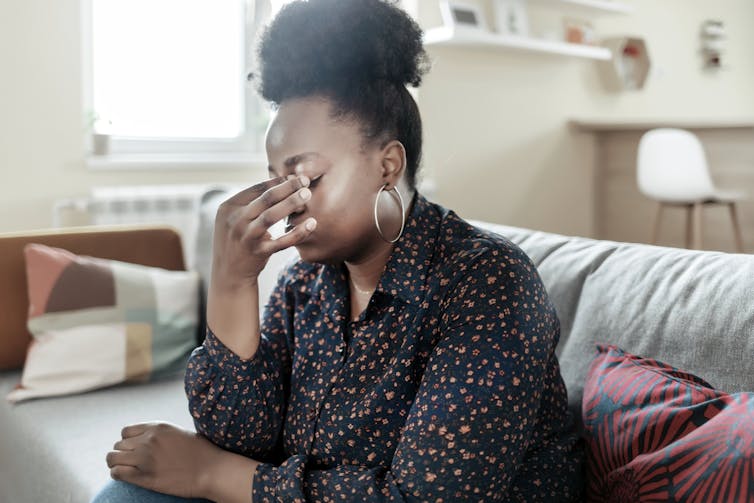
PixelsEffect/E+ via Getty Images
The superwoman role
Black women exposed to the persistent stress of navigating everyday racism and sexism face the additional burden of what researchers call the superwoman role. Not only do Black women have to weather their own experiences of race- and gender-based inequalities, they’re also expected to be invulnerable, hyperindependent and suppress their emotions in order to seem strong to their family and community. Many minimize their vulnerabilities and overstress their capabilities in order to fulfill an overwhelming obligation to take care of other people.
Many famous names have spoken about the effects of being the strong superwoman. Actress Taraji P. Henson has pointed to how the need to display strength can lead to ignoring the physical and emotional needs of Black women.
Rapper Megan Thee Stallion spoke about the emotional toll of the superwoman role after being shot by rapper Tory Lanez. “As a Black woman … people expect me to take the punches, take the beating, take the lashings, and handle it with grace. But I’m human.”
The superwoman role levies a heavy tax on Black women, leaving little room to prioritize their health. To cope with the stress, some engage in emotional eating or binge eating. The constant demands of playing multiple caregiver roles can also disrupt physical activity.
Naturally, these challenges make it difficult to adopt healthier eating habits and a consistent exercise routine. Even when working toward weight loss, some Black women continue to gain weight.
Improving weight loss for Black women
Lifestyle interventions that fully integrate the lived experiences of Black women into treatment may be key to improving weight loss. We argue that Black Feminism and Womanism, which focus on the experiences of women of color, can guide researchers to rebuild and reframe weight loss interventions to be more effective for Black women.
Black Feminism and Womanism are approaches guiding Black women and girls to surviving and thriving, specifically by always considering the role that gender and race play in different issues. These frameworks focus on multiple areas of health and wellness, including physical, mental and emotional health, arguing that self-care and wellness practices are acts of social change.
Focusing on the full context of Black women’s lives can lead to better overall health. Obesity, specifically, is influenced by multiple factors, and treating obesity requires a focus on holistic health and well-being. This includes addressing Black women’s economic needs, incorporating faith practices central to Black life, attending to emotional and mental health, and building an environment that makes acquiring healthy food and engaging in daily exercise an easy choice.
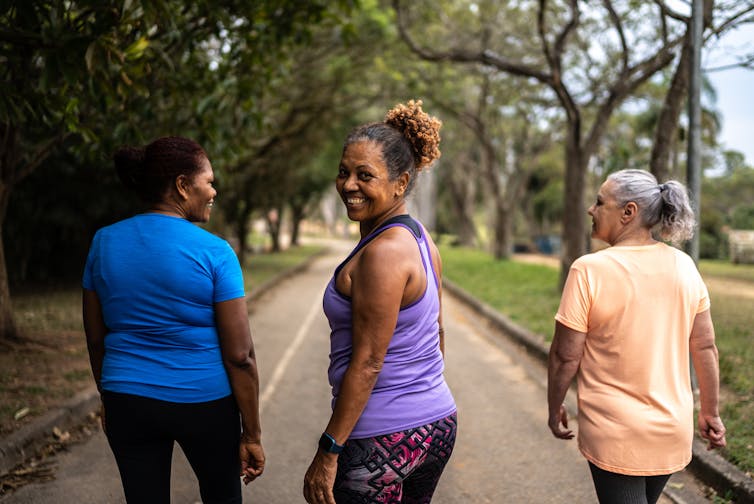
FG Trade/E+ via Getty Images
Current weight loss interventions vary widely in which elements of Black women’s lives they focus on. For example, some emphasize spirituality, while others concentrate on emotional health. Approaches to weight loss that respond to individual needs and move away from one-size-fits-all will be critical to addressing the various aspects of Black women’s lives that affect their wellness.
If health care providers and researchers begin listening to and working with Black women to redesign weight loss interventions, they will likely find that their efforts at addressing obesity among Black women are more effective.![]()
Loneke Blackman Carr, Assistant Professor of Community and Public Health Nutrition, University of Connecticut and Jameta Nicole Barlow, Associate Professor of Writing, Health Policy & Management and Women’s, Gender and Sexuality Studies,, George Washington University
This article is republished from The Conversation under a Creative Commons license. Read the original article.





